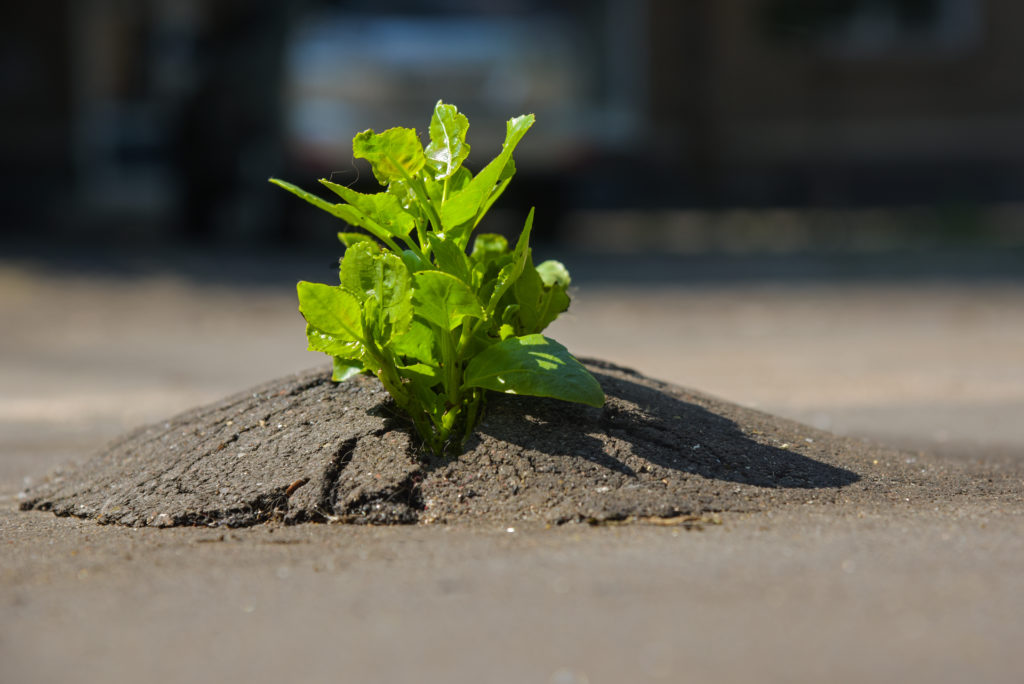
The growing shift in developing trauma-sensitive schools has also resulted in a surge of programs and approaches that aim to build resilience in students and staff. Even though people agree that resilient students thrive in school and beyond, a common understanding of what the word resilience means is important before considering these programs and initiatives. This article explores the concept of resilience from a research- and evidence-based perspective and highlights the protective factors needed to cultivate resilience in students.
Resilience
Is resilience a trait, a process, or an outcome? The American Psychological Association has answered that question by defining resilience as “the process of adapting well in the face of adversity, trauma, tragedy, threats or even significant sources of stress” (2014). While it provides some clarity, this definition also reflects the complexity of resilience. For example, the phrase “adapting well” might include having strong internal capacities, such as emotional regulation, as well as having the access and ability to use external resources. Some researchers suggest resilience is best understood on a continuum, where it varies with age and in context and depends upon the needs of the individual at that particular time of adversity (Southwick, Bonanno, Masten, Panter-Brick, & Yehuda, 2014).
Harvard University’s Center on the Developing Child defines resilience as the ability to overcome serious hardship. Rather than using a continuum to represent resilience, the Center uses a fulcrum as a visual representation, with positive outcomes on one end and negative experiences on the other. The resilient child tips toward the positive outcomes of health and well-being, despite facing severe adversity.
The University of Pennsylvania’s Positive Psychology Center has been studying the science of resilience since the 1990s (2019). Researchers there conceptualize resilience as a set of six capacities. First, self-awareness is the ability to acknowledge and recognize thoughts, feelings, and behaviors. Second, self-regulation is the capacity to monitor and adjust thoughts, feelings, and behaviors to achieve a desired outcome. Mental agility, the third capacity, refers to flexibility in thinking and the ability to see situations from multiple perspectives. Strengths of character refers to the ability to identify personal strengths and align them with values and beliefs. Fifth, connection is the capacity to build and maintain strong relationships. Finally, optimism is more than just expecting a positive outcome; it involves intentionality and purpose toward a positive outcome. These resilience capacities embed the core social-emotional learning competencies of self-awareness, self-management, social awareness, relationship skills, and responsible decision-making (CASEL, 2019). Cultivating resilience then, is also developing SEL competencies.
Protective Factors
One powerful result of resilience research is the identification of those protective factors that help cultivate resilience. Protective factors work in two ways; they can reduce the negative impact of adversity, and they can maximize the positive impact of resilience. Research from the Center on the Developing Child (2017) has found that the most common factor found in highly resilient children is having at least one stable and committed relationship with a trusted and supportive parent, caregiver, or another adult.
According to the Center, three other protective factors help cultivate resilience. First, children and young people have self-efficacy and perceived control, meaning they believe that they have the ability do something and have control over their responses to a situation. Second, they have been given ample opportunities to strengthen their adaptive skills. They are not just given tools; they practice using these tools in different situations, learning what works best for them. Finally, resilient children and young adults have been able to draw strength from their sources of faith, hope, and cultural traditions. In doing so, they are engaging with their families and communities.
Dr. Michael Ungar’s research supports the idea that resilience building is more community-oriented than an individual effort, or in his words, “Resilience is almost always more nurture than nature” (Ungar, 2018, p. 18). In studying resilience in young people all over the world, he has found that being able to “navigate to the resources necessary for success” is more important than individual capacities (Ungar, 2018, p. 7). He has identified twelve resources found in resilient young people. At the top of the list are structure, consequences, intimate and sustaining relationships, and many other types of relationships. It is important to note here that high control and high support are the characteristics of a restorative environment. This opens the possibility that schools engaging in restorative practices are also creating resilient systems.
According to Ungar, resilience is an experience that only occurs when there is adversity. Adversity comes in a range of intensity and types. Learning to perceive manageable amounts of stress as opportunities to learn and experiment makes for rich and resilient systems. Through his research, Ungar has found that resilient systems are open, dynamic, and complex systems, they are continually exposed to manageable amounts of stress, and they are more successful and productive. The continual exposure keeps their capacity for resilience growing and improving.

Resilience for All Ages
Resilience is a process of adapting well to adversity and a process of harnessing resources. As in all educational endeavors, the success of resilience-building efforts in schools is reliant on strong adult-child relationships. Tending to these relationships, in addition to the other protective factors, will ensure success in cultivating resilience.
Even though the adolescent brain may provide fertile ground for cultivation, resilience building is not limited to young people. Resilience building cannot occur in isolation and requires interaction, relationships, cultural traditions, and more. One of the most powerful ways to teach resilience is to model resilience. Every opportunity that adults have to demonstrate resilience is an opportunity for them to increase their own resilience.
Finally, the power of resilience is not limited to the current generation. As the Center on the Developing Child suggests, “Adults who strengthen these skills in themselves can better model healthy behaviors for their children, thereby improving the resilience of the next generation” (2017). Cultivating resilience in students and staff now brings greater resilience for future generations as well.
References
American Psychological Association. The road to resilience. Washington, DC: American Psychological Association; 2014. Retrieved from http://www.apa.org/helpcenter/road-resilience.aspx.
Center on the Developing Child at Harvard University (2017). Resilience. Retrieved August 16, 2019 at https://developingchild.harvard.edu/science/key-concepts/resilience/.
Collaborative for Academic, Social, and Emotional Learning. (2019). Core SEL competencies. Retrieved from https://casel.org/core-competencies/.
Positive Psychology Center at the University of Pennsylvania’s School of Arts and Sciences (2019). Resilience skill set. Retrieved August 16, 2019 at https://ppc.sas.upenn.edu/resilience-programs/resilience-skill-set.
Southwick, S.M., Bonanno, G.A., Masten, A.S., Panter-Brick, C., & Yehuda, R. (2014). Resilience definitions, theory, and challenges: interdisciplinary perspectives. European Journal of Psychotraumatology (5),2014. Retrieved from https://www.ncbi.nlm.nih.gov/pmc/articles/PMC4185134/.
Unger, M. (2018). Change your world: the science of resilience and the true path to success. Toronto, ON: Sutherland House.
Julie E. McDaniel-Muldoon, PhD

- Social Media Director, International Bullying Prevention Association (IBPA)
- Advanced Trauma Practitioner and Trainer, Starr Commonwealth (www.starr.org)
- Student Safety and Well-Being Consultant, Oakland Schools (Waterford, Michigan)
- Email: julie.mcdaniel@oakland.k12.mi.us
- Blog: https://jemmuldoon.blogspot.com/
- Twitter: @jemmuldoon
